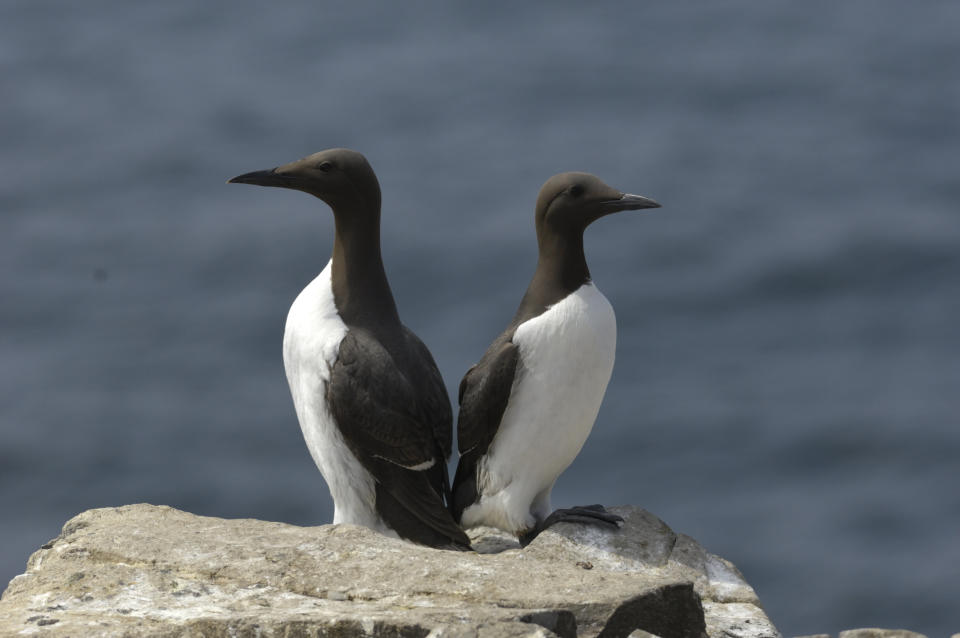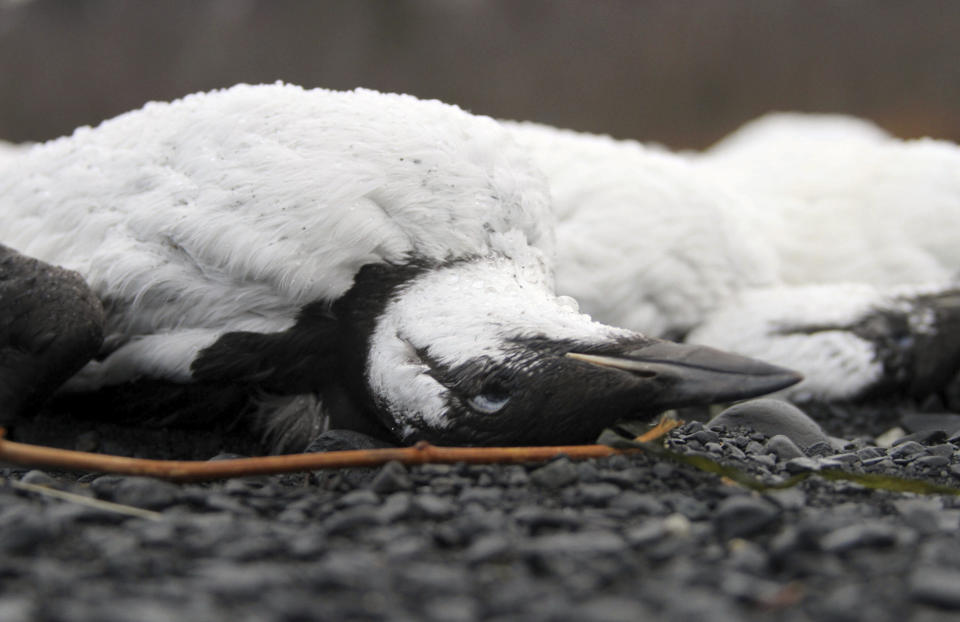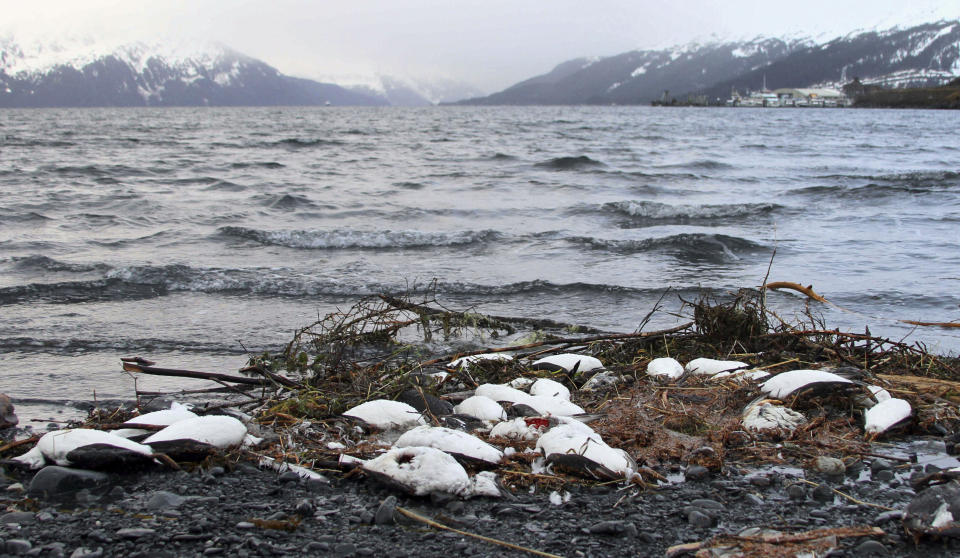Warm Water Patch Called 'The Blob' Fueled Biggest Known Seabird Die-Off In History
An estimated 1 million seabirds died along North America’s west coast during a marine heat wave, and scientists have now analyzed how their deaths were likely linked to a large mass of warm water known as “the Blob.”
From summer 2015 to spring 2016, about 62,000 dead or dying common murres were found washed up on shores from California to Alaska, scientists wrote in a study published in PLOS One this week. The common murre, also known as the guillemot, is a medium-sized seabird that looks similar to a penguin.

Most of the birds were emaciated and had died of starvation. Extrapolating from the percentage of dead seabirds that typically wash ashore, researchers estimated a total death toll for the common murre during that time period of about 1 million. Reproduction also plummeted across the region.
While murre die-offs have happened in the past ― often coinciding with warmer-than-normal water temperatures ― the scope of the 2015-2016 mortality was shocking. It was the largest mass die-off of seabirds in recorded history, according to a statement from the University of Washington, which partially funded the study.

“The magnitude and scale of this failure has no precedent,” lead researcher John Piatt, a biologist with the U.S. Geological Survey, said in the statement. “It was astonishing and alarming, and a red-flag warning about the tremendous impact sustained ocean warming can have on the marine ecosystem.”
Analyzing large amounts of data that included surveys of beached birds from the government and wildlife rehabilitation centers, recorded sea surface temperatures and reports from fisheries, researchers were able to determine how the heat wave fueled the murre die-off.
When huge numbers of birds began washing ashore in 2015, it was about two years into the Blob’s sweltering reign, the Los Angeles Times notes. The mass of warm water had begun forming in the Gulf of Alaska in 2013, and by April 2015 it was about 1,300 miles wide and 328 feet deep, New Scientist reported.
The researchers think that the Blob hit the common murres in multiple ways. The higher water temperatures caused the fish that murres eat to flee to deeper, colder waters. The warmer temperatures also led to poorer body conditions in these prey fish, making them a lower-quality food source.
At the same time, the warmer waters increased the appetites of some species of predator fish that eat the same prey as the murres. In other words, as the birds’ food source became harder to access and less nutritious, their competitors for that food also got hungrier.

“As the bottom of the ecosystem was shifting in not good ways, the top of the ecosystem was demanding a lot more food,” study co-author and University of Washington marine sciences professor Julia Parrish told the LA Times. Those conditions led to “intense competition for absolutely not enough food, which is what killed them.”
Murres are not in danger of going extinct, Piatt told New Scientist. But the affected populations could take years to get back to their former numbers. And researchers see what happened as a harbinger of things to come in a warming world.
Love HuffPost? Become a founding member of HuffPost Plus today.

The murre die-off, along with other mass seabird mortalities over the past decade, “demonstrates that a warmer ocean world is a very different environment and a very different coastal ecosystem for many marine species,” said Parrish in a statement. “Seabirds, as highly visible members of that system, are bellwethers of that change.”
Related...
How Climate Change Threatens Iceland's Iconic Puffins
The World’s Oceans Were The Hottest In Recorded History In 2019
We Just Lived Through The Hottest Decade On Record
This article originally appeared on HuffPost.

